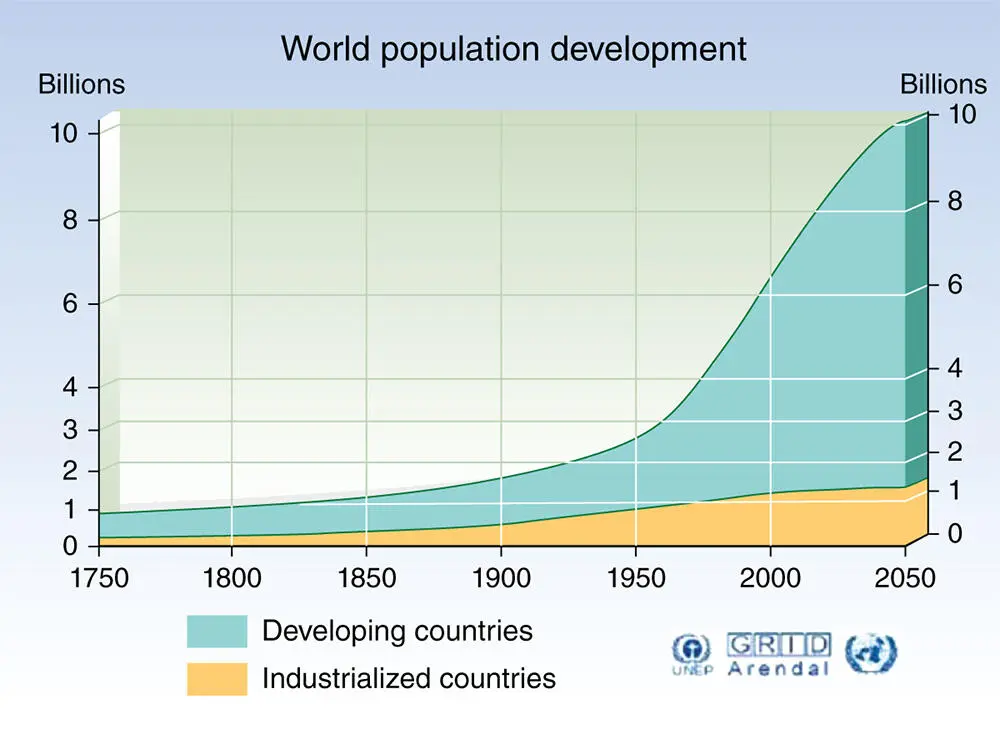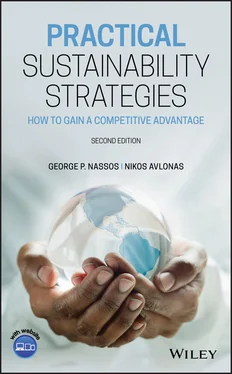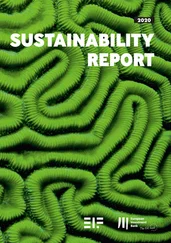For the Paris Agreement to be successful, all of these countries, particularly the developed countries, must make the necessary investments in educating the masses, adopting renewable energy, reducing the use of fossil fuels, and developing carbon capture technology. But this will take a major financial commitment. For that reason, the next meeting of this Conference of Parties (COP22) took place in November 2016 in Marrakech, Morocco, to take action on the Paris Agreement including obtaining financial commitments from each of the countries and to establish plans for tracking progress by each country. This is all going in the right direction but none of these laws is binding.
Another measure of the carbon dioxide in our atmosphere is the actual average concentration in parts per million (ppm). Since the beginning of human civilization up until about 200 years ago, our atmosphere contained about 275 ppm [16] of carbon dioxide. A concentration of 275 ppm CO 2is a useful amount—without some CO 2and other GHGs that trap heat in our atmosphere, our planet would be too cold for humans to inhabit. In 2008, James Hansen, the top NASA climatologist indicated: “If humanity wishes to preserve a planet similar to that on which civilization developed and to which life on earth is adapted, paleoclimate evidence and ongoing climate change suggest that CO 2will need to be reduced from its current 385 ppm to at most 350 ppm [17].” This level of 350 ppm has been the target of many environmentalists and even Bill McKibben, who founded a worldwide organization to curb global warming, named his organization “ https://350.org” [18]. Unfortunately, we are heading in the wrong direction as scientific instruments have shown that the earth's average carbon dioxide concentration reached 400 ppm in 2013 [19].
There are some scientists, while in the minority, who believe that global warming may exist and/or it is not anthropological. Regardless, reducing carbon dioxide emissions is like an insurance policy. If one assumes that global warming does exist and therefore takes the necessary action, the downside risk is minimal. If we learn in 20 years that global warming never really existed, it would have resulted in unnecessary development of renewable energy sources and possible introduction of a carbon tax. If on the other hand, one assumes that global warming does not exist and therefore takes no action at all, what would happen if this assumption is eventually determined to be incorrect. The result to the world population could be catastrophic with rising sea levels leading to flooding and droughts leading to dwindling food production.
Each of the environmental issues described earlier, consumption, fossil fuel reserves, water scarcity, and climate change are all related to the world population. Figure 1.4[20] provides a summary of the historical as well as the projected growth in population.

FIGURE 1.4 World population growth.
The world population reached 1 billion people in 1804, 2 billion in 1927, 5 billion in 1987, 6 billion in 1999, and 7 billion in 2011 [21]. In 2019, the world population is 7.7 billion and growing at a rate of 10 million people every 6.3 weeks [22]. Most of this growth is in the developing countries, which may not be a major problem because of the lower consumption rate. However, as indicated earlier some of these economies are increasing as are their consumption rates. China and India are examples of such growing economies.
THE ENVIRONMENT'S BIG FOUR
Today these are the four major environmental concerns in the world, specifically:
Water quality and quantity
Depletion of natural resources
Climate change resulting primarily from fossil fuels
Population growth—eventually exceeding the earth's capacity
Mitigating the impact of these four major environmental issues leads to an urgency for sustainable development.
1 1. Brower D. Let the Mountains Talk, Let the Rivers Run: A Call to Those Who Would Save the Earth. San Francisco, CA: Harper Collins; 1995.
2 2. The Holy Bible, Genesis 1: 1–31.
3 3. Available at https://www.ecowatch.com/one-third-of-commercial-fish-stocks-fished-at-unsustainable-levels-1910593830.html. Accessed 2019 Dec 14.
4 4. Available at https://en.wikipedia.org/wiki/Deforestation. Accessed 2019 Dec 14.
5 5. Available at https://phys.org/news/2012-10-wetlands.html. Accessed 2019 Dec 14.
6 6. Available at https://www.nationalgeographic.com/environment/habitats/grassland-threats. Accessed 2019 Dec 14.
7 7. Available at https://www.worldwildlife.org/threats/water-scarcity. Accessed 2019 Dec 14.
8 8. Available at https://www.footprintnetwork.org/our-work/ecological-footprint. Accessed 2019 Dec 14.
9 9. Meadows D, Randers J, Meadows D. The Limits to Growth: The 30-Year Update. White River Junction, VT: Chelsea Green Publishing Company; 2004.
10 10. Strauss M. Got corn? Smithsonian Magazine, p. 25, April 2012.
11 11. Diamond J. What's your consumption factor?. New York Times, 2008 Jan 2.
12 12. U.S. Geological Survey. https://www.gao.gov/assets/670/663343.pdf. Accessed 2019 Oct 24.
13 13. Hoekstra AY (ed.). Virtual Water Trade: Proceedings of the International Expert Meeting on Virtual Water Trade. Delft, The Netherlands: IHE Delft; 2003.
14 14. Hubbert MK. Nuclear energy and the fossil fuels. Presented before the Spring Meeting of the Southern District, American Petroleum Institute, San Antonio, TX; 1956 Mar 7–9.
15 15. Available at https://ourworldindata.org/how-long-before-we-run-out-of-fossil-fuels. Accessed 2019 Dec 14.
16 16. Available at http://350.org/en/about/science. Accessed 2019 Dec 14.
17 17. Available at http://www.columbia.edu/∼jeh1/2008/TargetCO2_20080407.pdf. Accessed 2019 Dec 14.
18 18. Available at https://350.org. Accessed 2019 Dec 14.
19 19. Gillis J. Heat trapping gas passes milestone, raising fears. New York Times, 2013 May 10.
20 20. Lester Brown. Available at https://www.treehugger.com/corporate-responsibility/when-population-growth-and-resource-availability-collide.html. Accessed 2009 Feb 17. Accessed 2019 Dec 14.
21 21. U.S. Census Bureau. https://en.wikipedia.org/wiki/World_population_milestones. Accessed 2019 Oct 24.
22 22. Available at https://www.worldometers.info/world-population. Accessed 2019 Dec 14.
CHAPTER 2 Development of the Sustainability Concept and CSR
In 1983, the United Nations convened the World Commission on Environment and Development and was chaired by Dr. Gro Harlem Brundtland who was the Prime Minister of Norway at the time. The agenda of this commission was the concern with the accelerating deterioration of the human environment and natural resources and the consequences of that deterioration for economic and social development. The final report was published in 1987 as “Our Common Future” [1] and resulted in the definition of sustainable development, or sustainability for short:
Sustainable development is development that meets the needs of the present without compromising the ability of future generations to meet their own needs.
This has become now well-known as the Brundtland definition of sustainability, but there are many other definitions that really all mean the same—protecting the environment so it will be available for the people forever. A definition developed for the Center for Sustainable Enterprise at the Illinois Institute of Technology—Stuart School of Business [2] is:
The practice of sustainable development assures that the natural resources and energy we use to provide today's products and services will not deny future generations the resources necessary to meet their needs while building and preserving communities that are economically, socially and environmentally healthy.
Читать дальше













